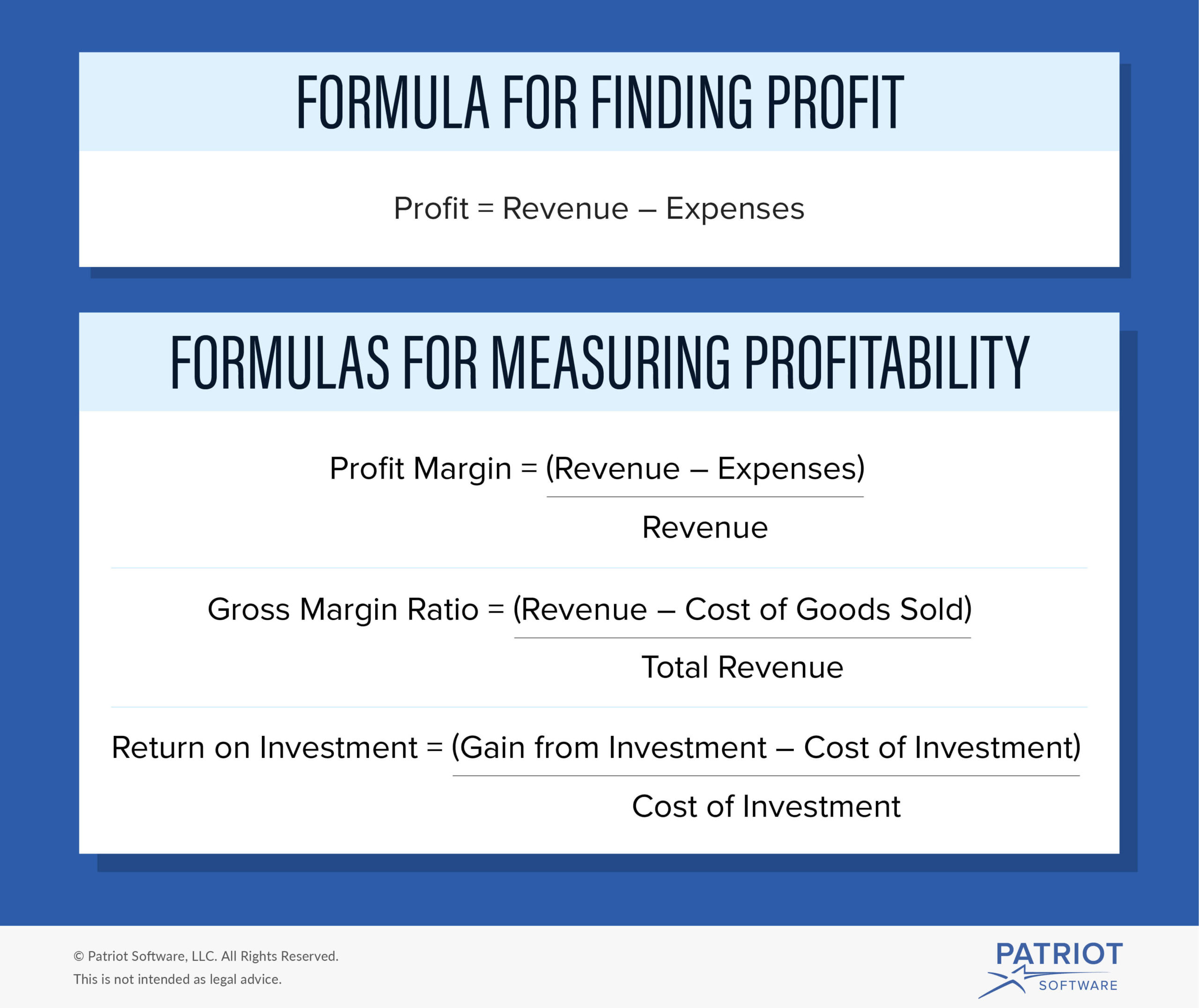As a business owner, you need more incoming than outgoing money to keep your company afloat. How much money you have left over after you pay expenses is known as profit. You should measure your business’s profits, which is known as profitability. Understand profit vs. profitability to analyze your company and make financial decisions.
Profit vs. profitability
Both profit and profitability give you insight into different aspects of your business. To avoid confusing the two, you need to understand the difference between profit and profitability.
Profit is the amount your business gains. It is a number that remains when you subtract expenses from your revenue. You can find profit by looking at your business’s income statement.
Profitability measures your business’s profits and helps you determine your success or failure. It is not an absolute number. Instead, it looks at what your business’s profits mean in the form of percentages or decimals. There are different profitability ratios you can use.
Profit
Your business’s profit is known as a net profit or loss. Your business either has leftover money after you pay expenses, or you are in the negatives.
Again, use your income statement to find your total income and expenses. Here is the formula for finding your business’s profit:
Profit = Total Revenue – Total Expenses
The bottom line of the income statement shows you your profit or loss. If your bottom line is negative, you need to adjust something in your business. You can cut down your expenses, come up with ways to increase your income, or both.
For example, you had a total of $20,000 in revenue in June. You had $10,000 in expenses. Your profit would be $10,000 ($20,000 – $10,000). Many business owners choose to invest leftover profits into their business.
Having a profit doesn’t necessarily mean your business is profitable. You could have positive profits that appear high, but they don’t give you the full picture of your company’s health.
To find whether your company’s finances reflect success or failure, you need to look at profitability.
Profitability
Profitability is a measurement of profit. You use profitability to determine whether your business is yielding enough profit to sustain and grow.
There are a few different profitability ratios you can use that measure aspects of your business’s success:
- Profit margin ratio
- Gross margin ratio
- Return on investment ratio
Profit margin ratio
The profit margin ratio shows you how much you earn after deducting your expenses, similarly to profits. However, the difference between profit and profit margin is that profit margin is measured as a ratio or percentage. Profits, on the other hand, are just dollar amounts.
With the profit margin, you know what percentage of each dollar your business retains.
Your income statement has the numbers you need for the profit margin ratio. To find your business’s profit margin ratio, use the following formula:
Profit Margin = (Revenue – Expenses) / Revenue
Let’s use the same numbers as in the profit example ($20,000 in revenue and $10,000 in expenses).
($20,000 – $10,000) / ($20,000) = 0.5
As you can see, you have a profit margin of 0.5, or 50%. That means you retain 50 cents of each sales dollar. The other 50 cents goes toward expenses. A profit margin above 25% is typically good.
Gross margin ratio
The gross margin ratio compares your gross margin to your net sales. Use the gross margin ratio to determine how much higher your products are priced compared to what you paid for them.
You can use the gross margin ratio to see how much revenue remains after you take out the cost of goods sold (COGS). The COGS is how much it costs you to produce the items.
Here is the gross margin ratio formula:
Gross Margin Ratio = (Revenue – Cost of Goods Sold) / Revenue
Let’s say you have $30,000 in revenue and $20,000 in cost of goods sold.
($30,000 – $20,000) / $30,000 = 0.33
In this example, your gross margin ratio is 0.33, or 33%. That means that 33% of your total revenue is left over after you pay COGS.
Return on investment (ROI) ratio
Another measure of profitability is the return on investment ratio. This ratio shows you how profitable your business is compared to how much you spent on your investments.
You use the return on investment ratio to determine how successfully your investments generate profits. The ROI ratio is a percentage.
Here is the return on investment formula:
Return on Investment = (Gain from Investment – Cost of Investment) / Cost of Investment
For example, you spend $1,000 on an email marketing campaign that results in $1,400 of sales.
($1,400 – $1,000) / $1,000 = 0.4
You would have a return of $0.40, or 40%, on each dollar you invested. Typically, the higher the number, the better your profitability.
Profitability vs. profit in a nutshell
Their names might sound similar, but profit and profitability are quite different. Profit shows you how many dollars you have left after deducting expenses from revenue. You find profitability to determine whether your profits are healthy or unhealthy.
The formula for finding profit is:
- Profit = Revenue – Expenses
There are a few formulas for measuring profitability:
- Profit Margin = (Revenue – Expenses) / Revenue
- Gross Margin Ratio = (Revenue – Cost of Goods Sold) / Total Revenue
- Return on Investment = (Gain from Investment – Cost of Investment) / Cost of Investment
When you need to find exactly how much leftover money you have, look at your profits. When you want to know how well your business is doing at handling its revenue and expenses, find your profitability.
To find your profit and profitability, you need to keep accurate records. Patriot’s online accounting software lets you track expenses and income. It’s made for the non-accountant, so you can get back to running your business. Get your free trial today!
This is not intended as legal advice; for more information, please click here.

